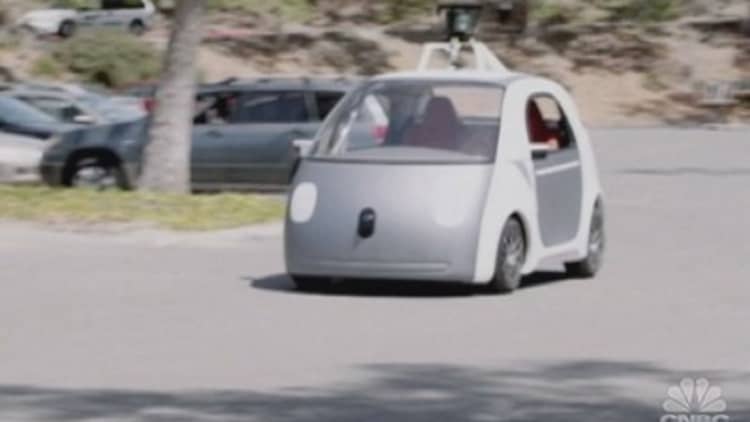Imagine a garage where driverless cars park themselves or highways with lanes dedicated to autonomous vehicles.
A new report from Ernst & Young says those futuristic options are coming over the next 20 years, as vehicles with autonomous drive technology grow in popularity.
But despite the excitement from recent headlines, questions remain over how long it will be until truly autonomous drive cars come into existence—and what cost they'll bring to consumers.
"There are clearly some hurdles for autonomous drive vehicles to overcome, but the technology will slowly be coming to vehicles," said Anil Valsan, lead automotive analyst at Ernst & Young.
Read MoreSelf-driving cars rewriting rules of the road
On the heels of Google's prototype self-driving car reveal last week, Valsan and his team forecast that in 2025, only 4 percent of vehicles sold around the world will have autonomous vehicle technology.
But by 2030, sales of automobiles with this technology will take off; and by 2035, three out of four vehicles sold around the world will have it.
Read MoreGoogle's driverless car: Good news for bad drivers
"We're likely to see the greatest adoption in the U.S., but it will grow rapidly in other markets around the world," Valsan said.
Still, Ernst & Young predicts truly autonomous vehicles are farther in the distance, saying drivers will remain in control of their vehicles the majority of the time they're behind the wheel. The firm instead predicts the adoption will be limited to controlled areas, such as parking garages. Valsan said he envisions structures where the cars park themselves, while drivers wait outside for their vehicle.
"I could see a public garage where the driver doesn't need to be in their car when parking it," he said. "You could have people touching a few buttons on their phone and then waiting for their car to start up and come down to the exit without a driver behind the wheel."
Read MoreUber CEO: Sorry, drivers. Future is no-driver cars
Valsan also mentioned the possibility of dedicated highway lanes for autonomous drive vehicles, where the driver does little to steer or accelerate the car. Another option: Urban centers where driverless cars shuttle people from point to point.
The cost of going autonomous
While almost every automaker is working on incorporating the technology, few have estimated how much it will cost car and truck buyers.
Ernst & Young predicts the costs will be substantial, at least in the beginning.

The firm estimates that in 2025, the cost to put autonomous drive technology into a vehicle will be $7,000 to $10,000 per automobile. But by 2030, it expects the cost per vehicle to drop to $5,000, and down to $3,000 by 2035.
"It will definitely hurt adoption, at least at first," he said. "There will have to be government support to offset the cost of autonomous drive technology in new models."
—By CNBC's Phil LeBeau
Questions? Comments? BehindTheWheel@cnbc.com.


